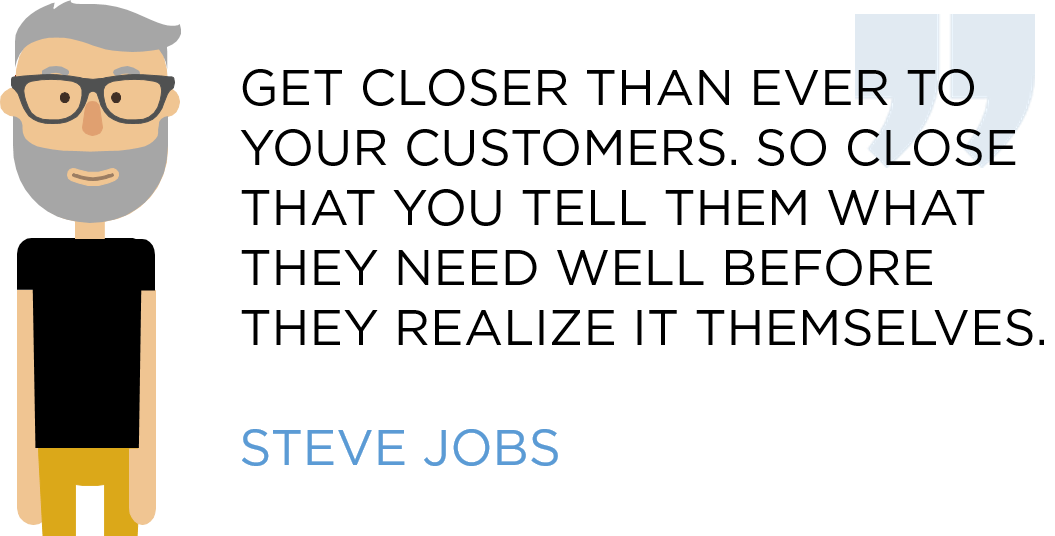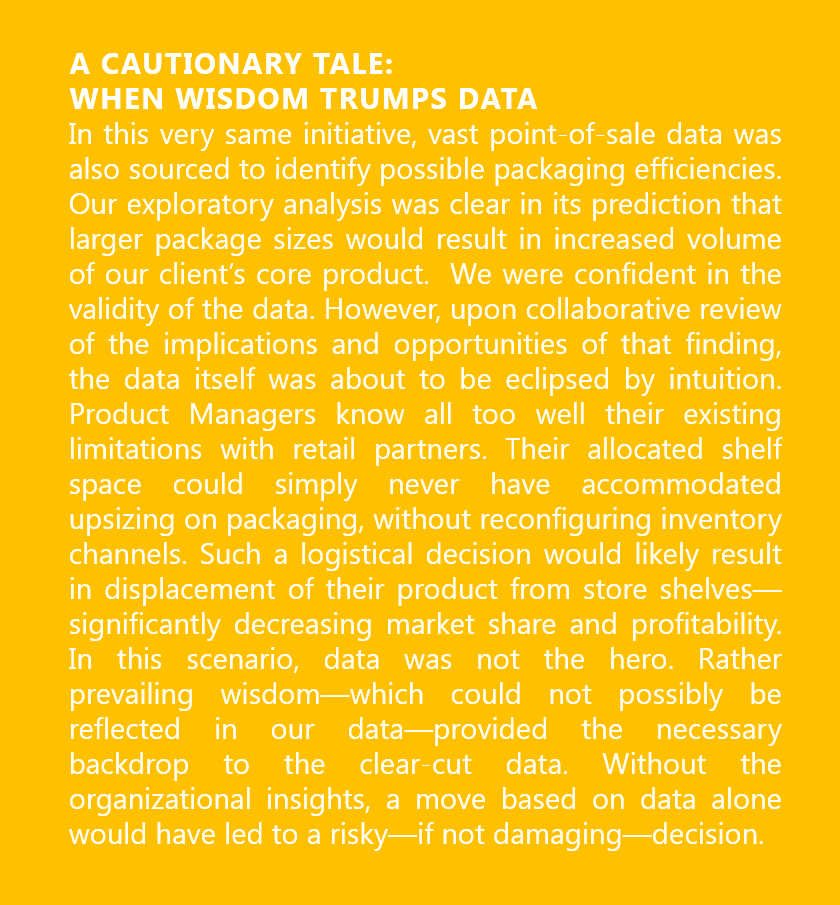When “New” Data Tells an Unforeseen Story: A Tale About An Unexpected Consumer
By Claire Gilbert, Senior Statistical Analyst, Gongos, Inc.
From the time their founders had a dream, B-to-C corporations envision who their buyers are, and who they will become. No one said it better than Steve Jobs when he professed that organizations must get so close to customers that it’s you who tells them what they need well before they even realize it themselves.
Throughout time, thriving organizations—young and old—have invested in building powerful images of their customers that guide initiatives from product concepts and innovation, to marketing campaigns and customer experience. In business management and leadership journals far and wide, it’s largely accepted that two forces tend to ground an organization’s knowledge and belief systems as they develop such consumer narratives:
» Experience & Instincts – equal parts C-suite intuition, judgement, and inherited wisdom
» Data & Information – primary research, enterprise knowledge, and external sources of data
From the executive board to the front line, consumer-savvy organizations cultivate a wealth of knowledge that provides ample confidence as they bank on million dollar decisions. But something’s changed. In today’s era of small and big data, legacy mindsets are being tested. Marrying long-held internal wisdom with new streams of information is opening up a world of possibilities—particularly in established companies—but only when stakeholders are up to challenging their long-held beliefs.
A Narrative about Unexpected Loyalists
One such client of ours in the CPG sector found itself in an advantageous position that not only defied its time-honored assumptions, but highlighted potential to sizably expand its market share. Teams across this organization—from packaging and merchandising, to social media—share a unified view of their core customer. At a moment’s notice, individuals from senior management to entry-level can rattle off the customer persona of Levi Louie.
 For decades, this internal nomenclature has successfully guided strategic initiatives that enabled them to transform from a local C-store novelty item to a major food brand. More tangibly, it has helped stakeholders identify easy wins and course correct along their journey. Often, in the absence of the time and resources to conduct traditional market research, the ability to embrace Levi Louie’s lifestyle and circumstance has actually amplified the company’s profit margins.
For decades, this internal nomenclature has successfully guided strategic initiatives that enabled them to transform from a local C-store novelty item to a major food brand. More tangibly, it has helped stakeholders identify easy wins and course correct along their journey. Often, in the absence of the time and resources to conduct traditional market research, the ability to embrace Levi Louie’s lifestyle and circumstance has actually amplified the company’s profit margins.
However, as the nutritional landscape evolved and cultural tides shifted, so too did the multitude of data sources available to augment their thinking about Levi Louie. And they, like many organizations in growth mode, sought further wisdom about Louie, his life…and about untapped category potential.
In their quest to invigorate the picture of this core customer, they anticipated uncovering insights that would fuel incremental gains centered on Louie. Yet, what they were met with was a unique and unexpected customer persona based on these new streams of digital behavioral data – big and small.

While Louie was still a significant—and loyal—figurehead in the life of their brand, a new type of customer was surfacing. She didn’t fit Louie’s prescribed narrative at all. She was more youthful and less interested in Levis (jeans that is), yet the data revealed that she was routinely purchasing one of their core products to meet unforeseen needs. And worse yet, no one was paying attention to her.
Because Louie’s narrative was so woven into its corporate fabric, convincing teams across the company to internalize and commit to another core customer personality required carefully crafting a story that both demonstrated the market impact and distinction from Louie. It became evident that we had to leverage Louie’s existing narrative to articulate the distinct advantages and opportunities for both segments.
And leverage they did, as this once-unforeseen female buyer is opening up new possibilities for flavor profiles, ingredients, packaging, and marketing messages, which is in turn injecting new thinking—and strategic growth—across leadership.
New Data Doesn’t Always Add Up to Wisdom
Reconciling new streams of data with longstanding wisdom is a delicate balancing act as executives look to analytical assets to innovate and optimize. When making decisions and developing growth strategies, it is paramount to recognize the advantages and limitations that data and experience bring to the table.
» Data can be complementary in its reinforcement of a standing narrative developed and embedded into the fabric of an organization.
» Data can be counter-intuitive or contrary to existing wisdom. With careful interpretation and organizational support—as we saw in the case of an unforeseen loyalist—it can open up new doors to opportunity.
» Data can’t live in isolation, so don’t follow it blindly. Inherent understanding of the business provides critical context that data sometimes lacks.
The most successful decision makers understand that analytics is both an art and a science. Where the black and white data leaves off, stakeholders with domain-specific knowledge add color—applying the contextual cues that empower them with confidence. Each force presents a valid point of view. And while independently intuition and data have purpose, together they have power—and the ability to unleash new wisdom that was once unforeseen.
As published on CustomerThink.
